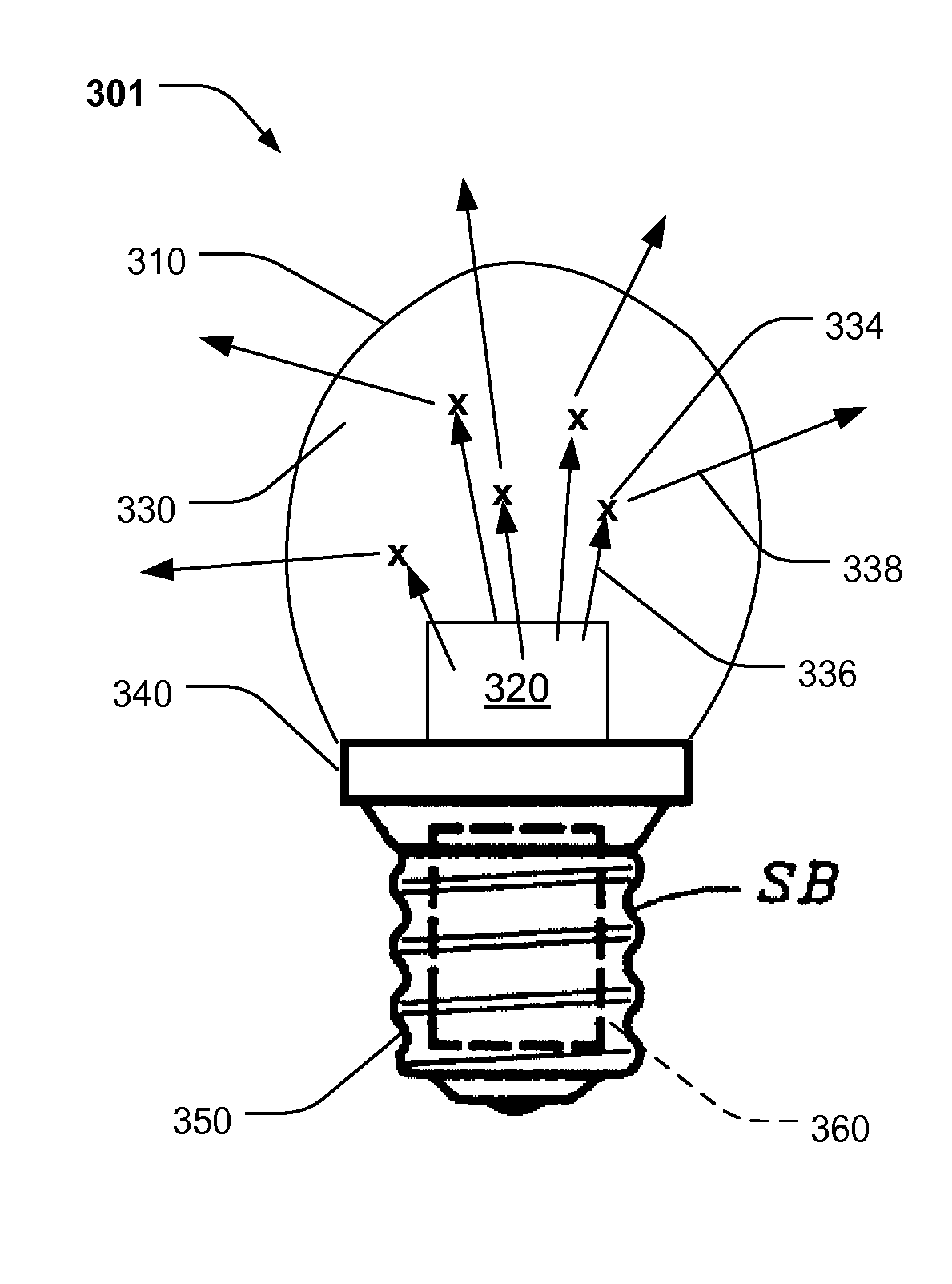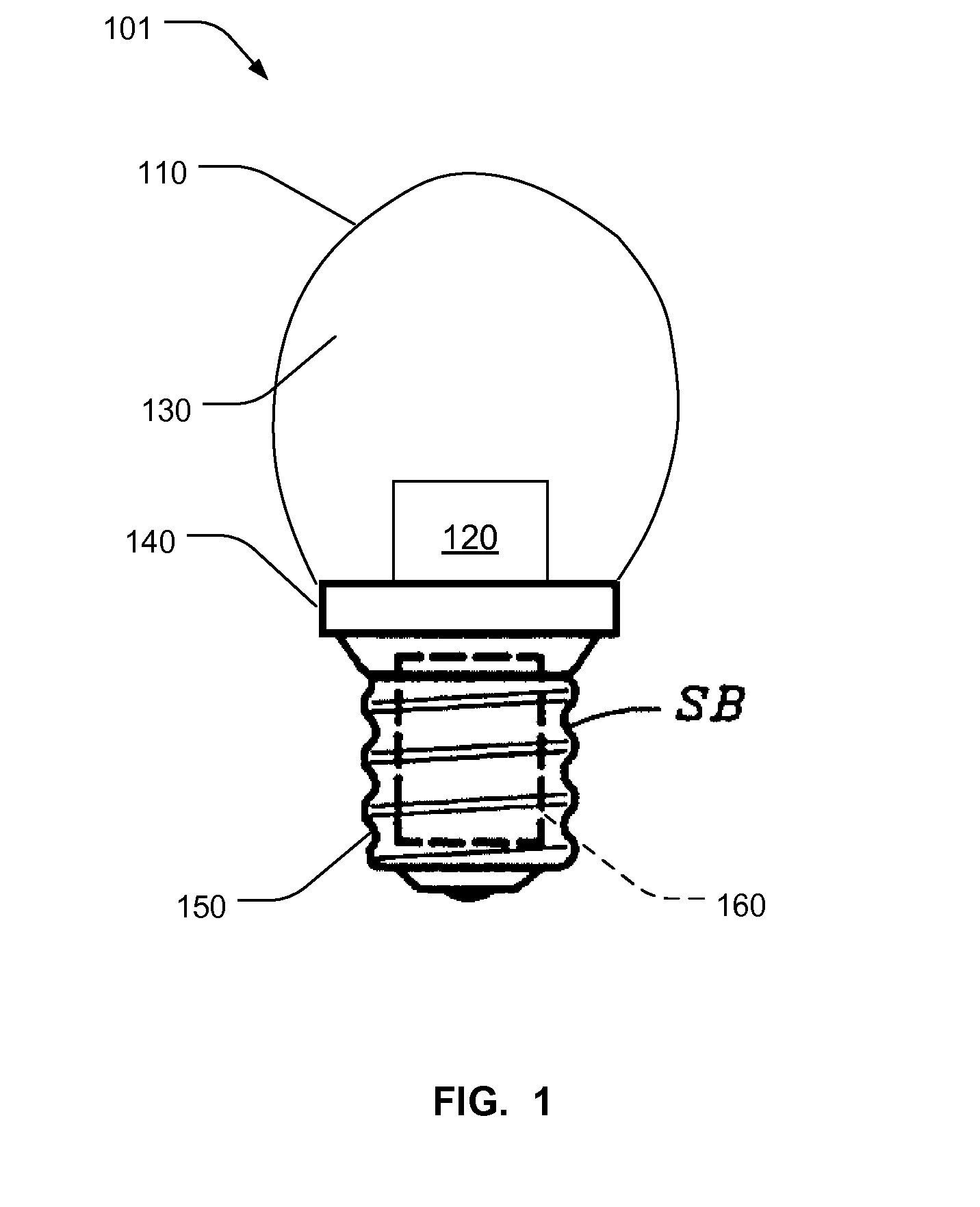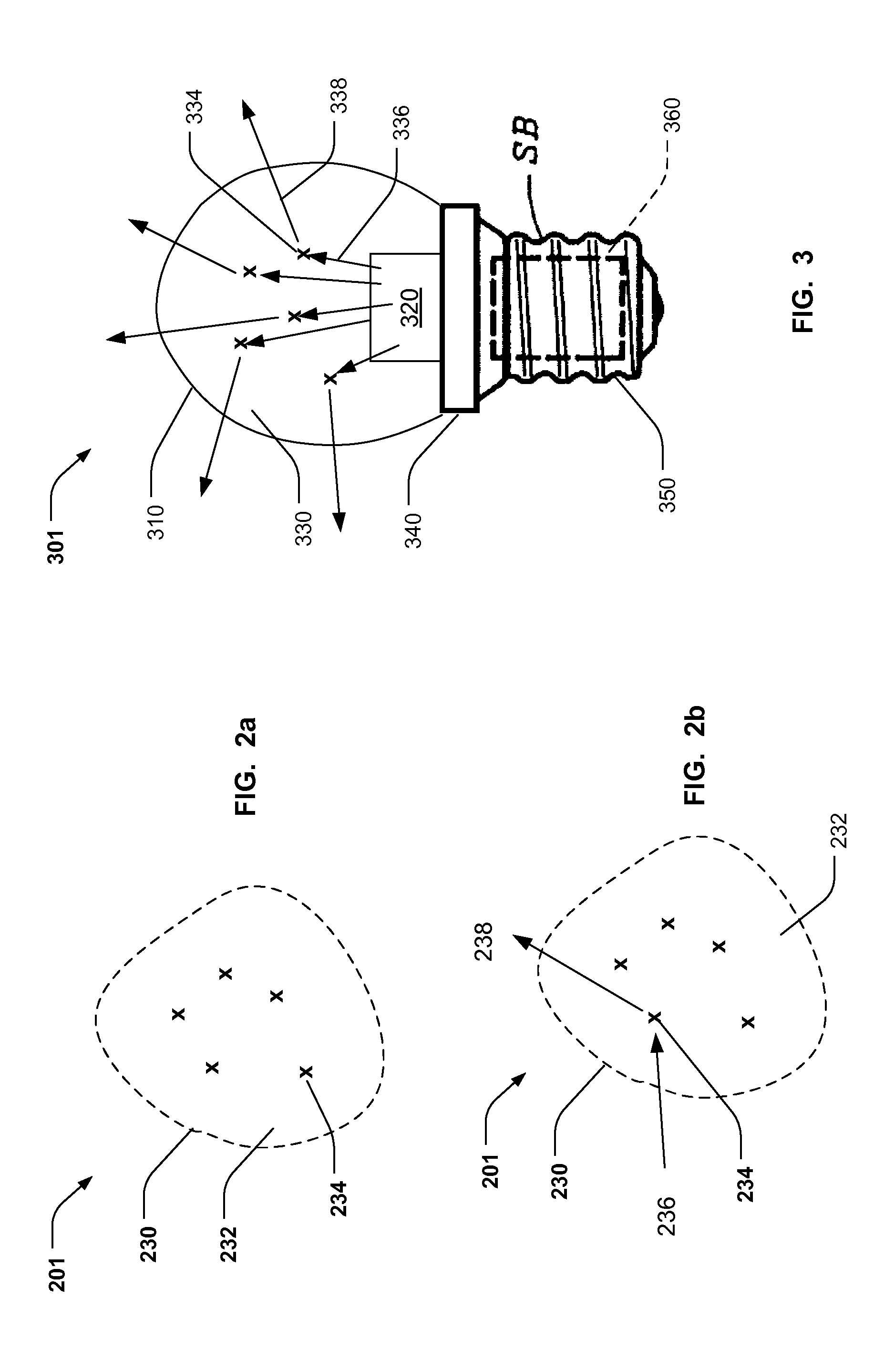Lighting system using dispersed fluorescence
- Summary
- Abstract
- Description
- Claims
- Application Information
AI Technical Summary
Benefits of technology
Problems solved by technology
Method used
Image
Examples
Embodiment Construction
[0015]In FIG. 1, an embodiment of the present invention 101 consists of a light transmissive envelope 110 with excitation light source 120. A light re-emitting medium 130 exists between the excitation light source 120 and the envelope 110. A base 140 is shown to portray connection to electrical supply and mechanical support, and may be of type well known in the art. Optionally, circuitry to modify the electricity applied through the base 150 and sent to the source 120 may be at least partially enclosed within the socket as for example, the region shown in dashed box 160.
[0016]The excitation light source 120 may be a blue or shorter wavelength source as known to the art. The chemistry of the material may, for example, be InGaN (indium gallium nitride), or that used in a standard white LED known to the art.
[0017]FIG. 2a shows detail of a light re-emitting medium 201, corresponding to medium 130 in FIG. 1. The medium 201 is composed of fluorescent material 234 suspended in the suspensi...
PUM
 Login to View More
Login to View More Abstract
Description
Claims
Application Information
 Login to View More
Login to View More - R&D
- Intellectual Property
- Life Sciences
- Materials
- Tech Scout
- Unparalleled Data Quality
- Higher Quality Content
- 60% Fewer Hallucinations
Browse by: Latest US Patents, China's latest patents, Technical Efficacy Thesaurus, Application Domain, Technology Topic, Popular Technical Reports.
© 2025 PatSnap. All rights reserved.Legal|Privacy policy|Modern Slavery Act Transparency Statement|Sitemap|About US| Contact US: help@patsnap.com



